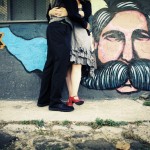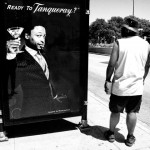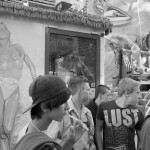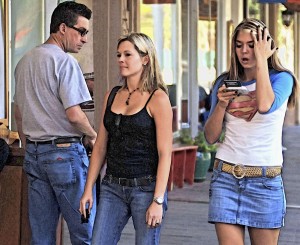Street Photography is Alive, Well and Evolving

One of the earliest known photographs, View of Boulevard du Temple (Louis Jacques Mande Daguerre, 1839), not only introduced photography to the world, it also was a precursor to one of photography’s first genres: street photography. Although interest in street photography has waxed and waned in the almost two centuries since View was taken, the latest exhibit at the Colorado Photographic Arts Center (CPAC), Street View, which presents the work of thirty nine current artists, demonstrates that the genre is alive and well.
More than this, Street View also reveals that current street photography—while maintaining touch with its roots in the works of Brassai, Cartier-Bresson, Evans, Frank, Winogrand and the other demigods of the genre—continues to evolve; just as the technology of photography itself has evolved from daguerreotypes to today’s digital wizardry. For anyone interested in fine art photography, and certainly anyone passionate about street photography, Street View is a must-see exhibit.
One aspect of the evolution in street photography can be seen in the typology of Street View’s artwork. The exhibit consists of forty three prints and one digital video. The video, recorded by a smartphone, is probably a sign of things to come (or already here) in fine art ‘photography’. Analog photography, hanging on seemingly by a thread, is represented by only eight prints, although three of these are color C-prints, which itself represents a step away from the classic B&W street photography of the 40’s, 50’s and 60’s. Among the digital prints grayscale fares less prominently than it does among the analog prints, as 24 of the 35 digital prints feature color.
However as interesting as this typological view of the evolution of street photography may be, the more interesting aspect is how the aesthetics of the exhibit’s artwork relates to the aesthetics of classical street photography.

Perhaps with a nod to Walker Evans and Robert Frank, whose imagery featured the ‘signs’ of the times, Virginia Pringle asks Are You Ready to Tangueray, Bruce Zander finds Man on the Street, and Paul Sisson reads the signs of decline in Rock River Wyoming. If Evans or Frank ‘did color’ it might have come out like Derrick Burbul’s Sign to Nowhere.
Henri Cartier-Bresson famously triggered his Leica’s shutter at the precise instant when all of the unsuspecting actors in a concisely framed scene were momentarily held in a balanced composition of juxtaposed elements and human expression, thus capturing poignancy and raising a slice of otherwise unremarkable street life to high art. Cartier-Bresson would recognize the ‘decisive moment’ in Jim Lustenader’s Lust, in Patricia Sweeney’s City Kids, and in Stacy Keck’s Street Art Love.

Certainly Garry Winogrand, he of the skewed horizon and soft spot for the fair sex, would appreciate Leo Mendonca’s Oblivious (NY 003), and Chip Rutan’s The Titans. Winogrand rarely shot color, and likely never applied a Photoshop watercolor filter, but if he had he might have come up with something like Lowell Baumunk’s Supergirl is Summoned to Save the World.

Actually, Baumunk’s Supergirl image is just another example of the evolution of the genre. Street photography and color is one thing, but street photography and Photoshop watercolor filter? Once the genre crossed the digital divide there is no stopping the changes we’ll see. Need more evidence? Street View presents Rhona Eve Clews’ Where Every Light is the Moon, a smartphone video clip, with ambient sound track, of a ride on a double-decker through the streets of London. Yup, this is street photography today.

But color and technology aren’t the only aspects of the evolution, at least in the eyes of the exhibit’s juror, Anne Kelly, Associate Director of photo-eye Gallery, Santa Fe. Kelly opted to stretch the boundaries of street photography to the point where it overlaps with other genres. For example, Kelly included images like Carrie Tomerlin’s Encroachment, Kendall Davis’ Dancing in the Street and Cell Phone, and Mike Whitley’s Brush, Lincoln Nebraska and Reindeer, Longmont Colorado. These images, due to their either decidedly environmental or decidedly suburban chords, struck me as far more related to Robert Adam’s work than to gritty street photography. Nonetheless, these seeming outliers are lovely images, so while their inclusion in Street View puzzled me, they didn’t detract from my enjoyment of the exhibit.
Rare is the exhibit where every one of its works of art is worth at least a few minutes of time. Street View is one of those exhibits. Street View is at CPAC through December 15, 2012.